
Gunnera manicata Pot de 1 litre Gamm Vert
Gunnera manicata 's common name is an allusion to the shape of the large, palmate leaves of cultivated rhubarb. In Chile, consumption of the young, peeled petioles of Gunnera tinctoria is reminiscent of rhubarb consumption in Britain. Non-edible uses of Gunnera manicata include root tannins being used as a black dye, while the leaves have.
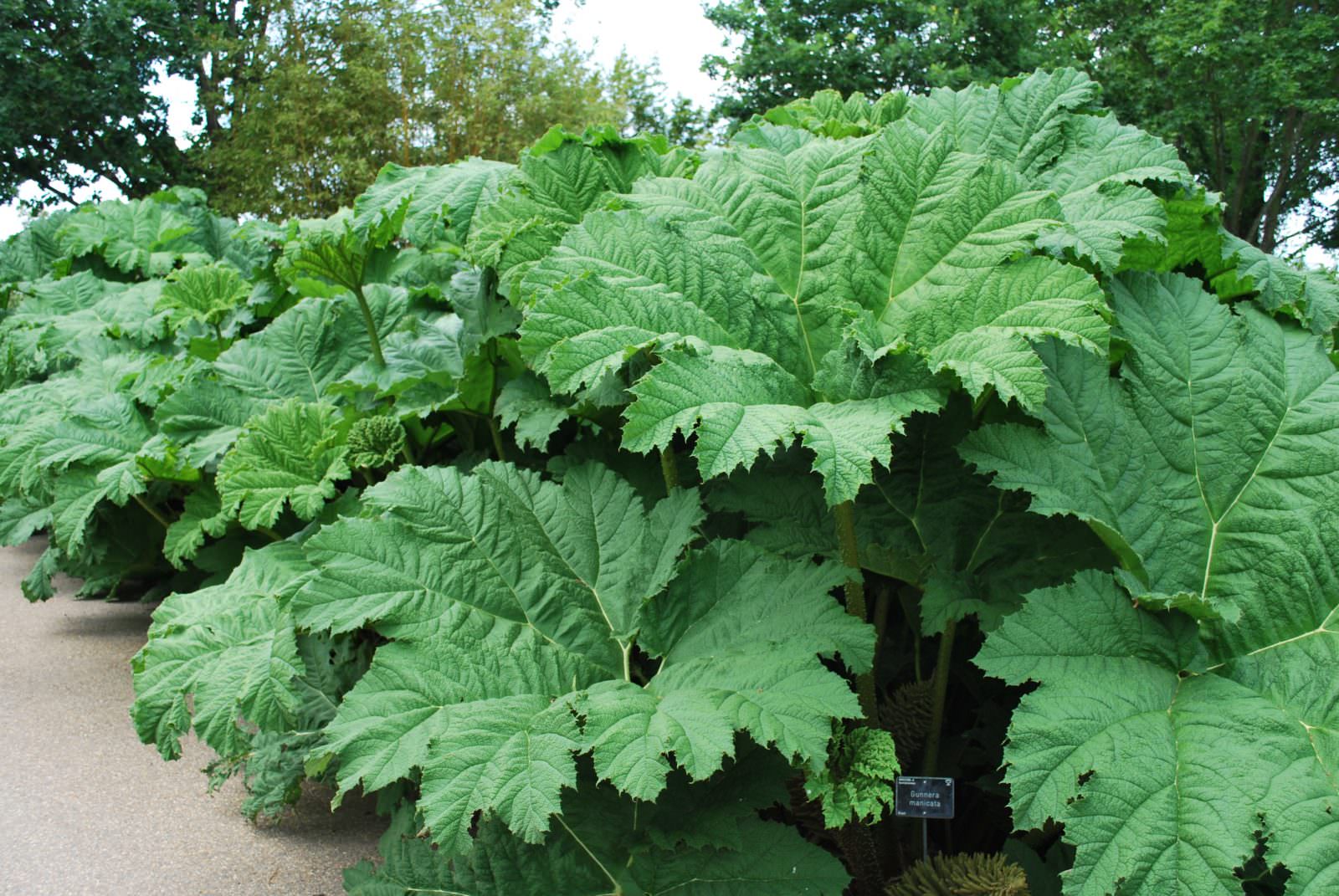
Gunnera Manicata Millstone Garden Centre
Boggy / Clay / Heavy / Moist. Gunnera manicata is one of the biggest and most spectacular architectural, herbaceous plants, commonly known as 'giant rhubarb'. It needs a lot of space and looks best grown as a specimen plant in a bog garden or at the pond edge, where the reflections from the water reveal the prickly undersides of its leaves.

Mammoetblad Gunnera manicata Planten online kopen
It has long been believed that the giant Gunnera plants in Britain are one of two species, Gunnera manicata or Gunnera tinctoria.The former is a benign and beautiful plant originating in Brazil.
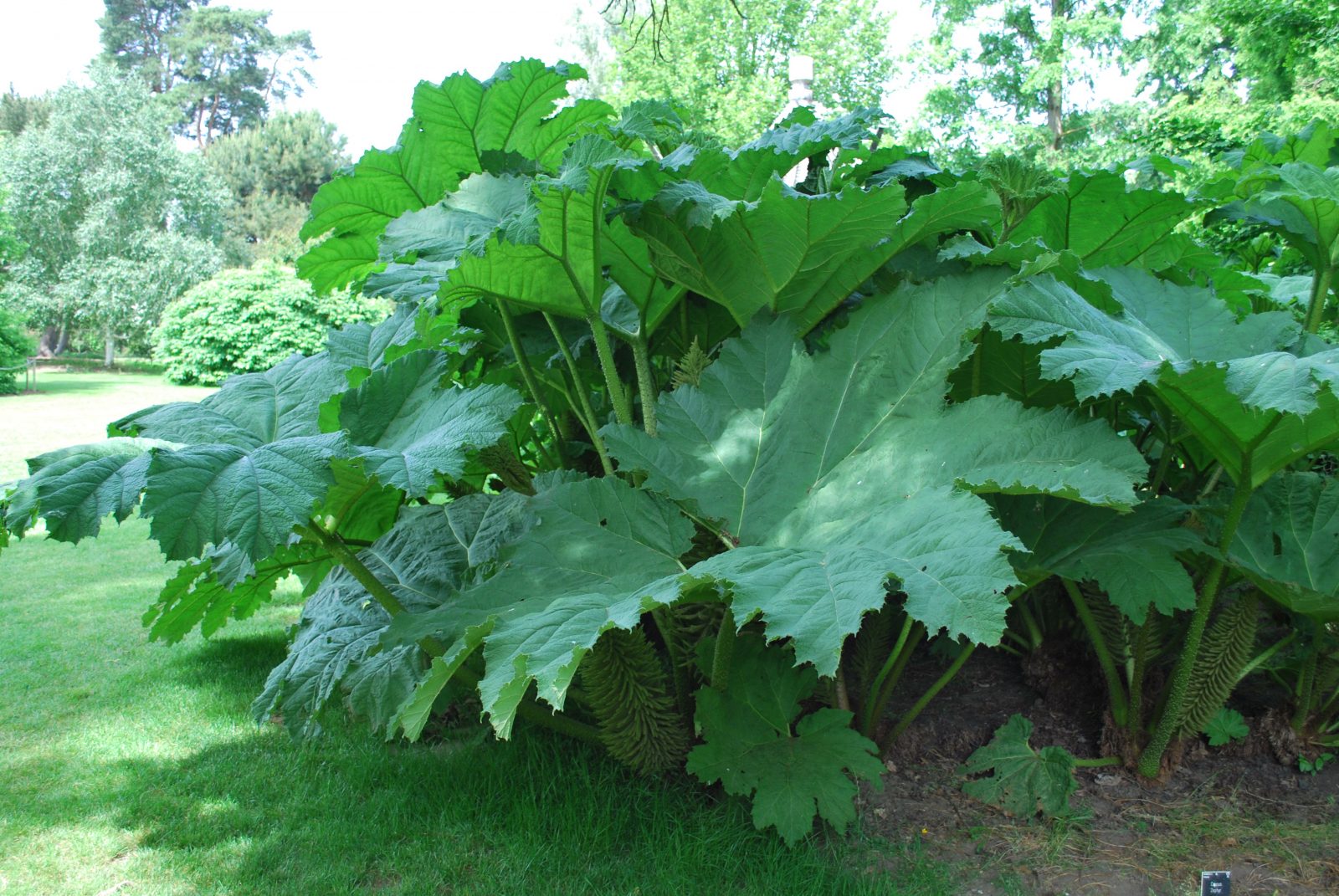
Gunnera Manicata. Perennials for Sale UK. Letsgoplanting.co.uk
A very architectural plant, Gunnera manicata (Giant Rhubarb) is a large, herbaceous clump-forming perennial grown primarily for its gigantic, round to kidney-shaped, deep green leaves, up to 6 ft. across (180 cm). The leaves are palmately lobed, prominently veined, and sharply toothed and sit atop prickly stalks that extend to 10 ft. tall (3 m).
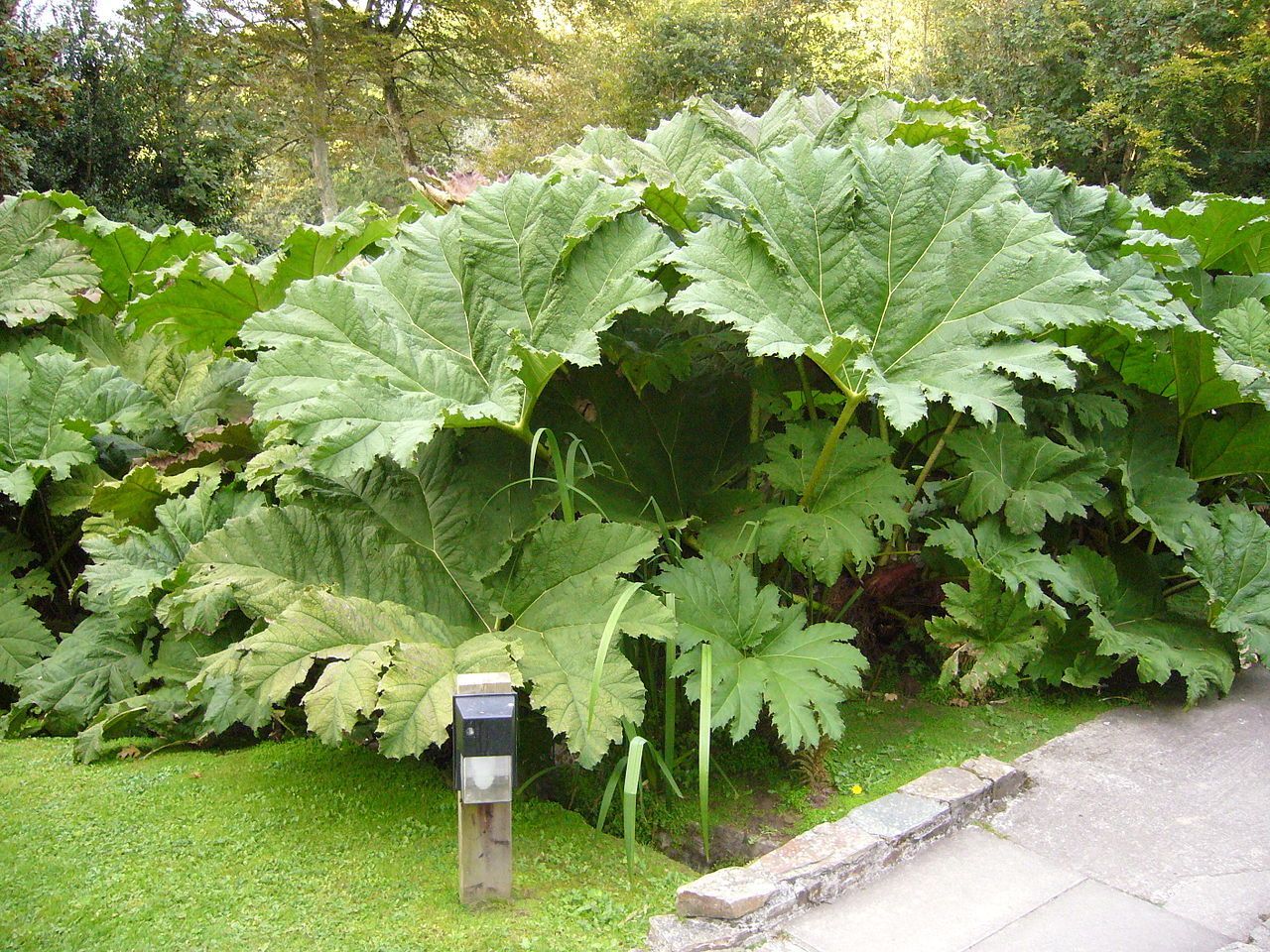
Gunnera x manicata 5 litres
In hot weather, water immediately on receiving. New plants need to be watered daily if your temps are over 70 degrees during the day with 50 degree nights during the growing season. In cool or cold weather where the temperature is at or below 45 degrees during the day, do not water until plants dries out. Too wet soil will root rot and kill the.

Vaste planten kopen Gunnera manicata
Gunnera manicata is a giant Brazilian rhubarb with large distinctive leaves that are round kidney shaped and is ideal for an architectural plant. Its leaves grow up to 6 feet in diameter while its rhizome stems can extend up to 10 feet. During summer, its leaves gunnera manicata produces conical-shaped pannicles that consist of tiny red-green.
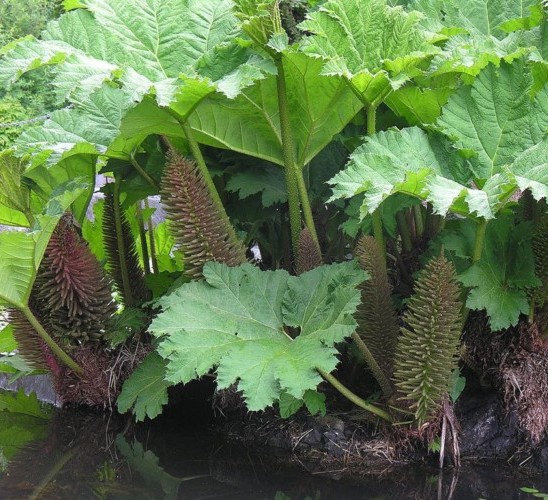
Gunnera manicata mammoetblad kopen Maréchal
The Gunnera genus is named after Johan Ernst Gunnerus (1718-1773), a Norwegian botanist. It is endemic to certain regions of Central and South America, Australia, New Zealand, Southeast Asia, Africa, and Madagascar. The species that are placed under this genus are herbaceous flowering plants that belong to the Gunneraceae family.Gunnera manicata, which is native to southeastern Brazil, is one.
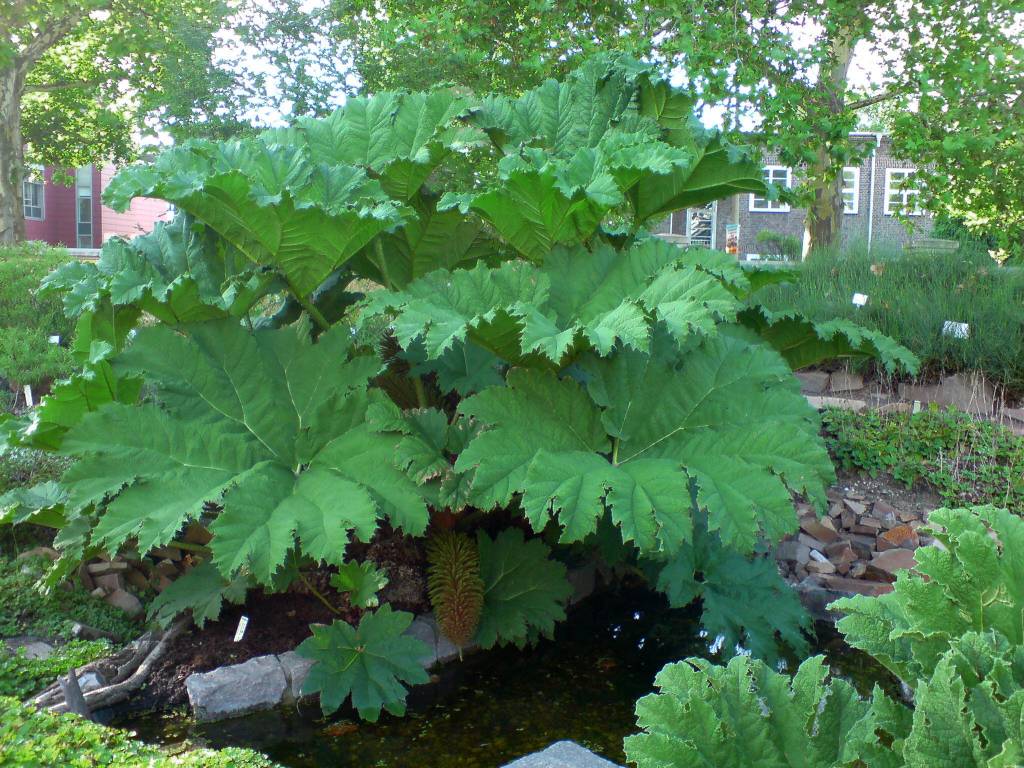
Gunnera Manicate kopen bij Tuincentrum Boskoops.nl Online Tuincentrum
Gunnera manicata, known as Brazilian giant-rhubarb or giant rhubarb, is a species of flowering plant in the family Gunneraceae from the coastal Serra do Mar Mountains of Santa Catarina, Parana and Rio Grande do Sul States, Brazil. In cultivation, the name G. manicata has regularly been wrongly applied to the hybrid with G. tinctoria, G. × cryptica.
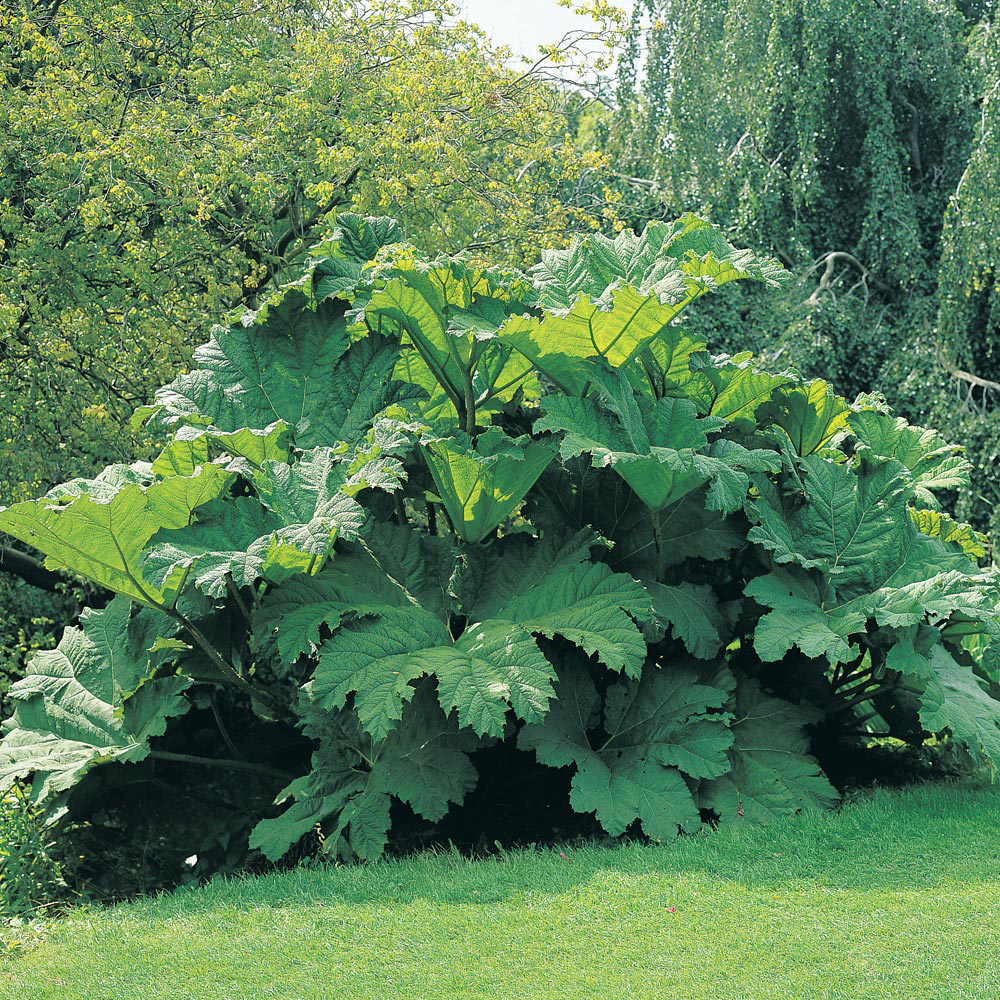
Gunnera manicata, Giant Rhubarb in GardenTags plant encyclopedia
Plant gunnera in early spring after there is no more danger of frost. Dig a hole about twice the diameter of the root system and as deep as the nursery container. Backfill with original soil and tamp it down. Water well and continue to water plants regularly, especially if the soil is not naturally wet, to encourage a strong root system.

Gunnera manicata, Jättegunnera, P11cm Perenner
Gunnera manicata GUN-ner-ah man-ih-KAY-tah Audio This is the granddaddy of big-leaved perennials. No other plant can so thoroughly alter the scale of a garden while calling such attention to itself. Noteworthy CharacteristicsThe architectural leaves grow up to 6 feet across. They are rounded and deeply toothed, and they sit atop prickly stalks.

Gunnera manicata Pot de 4 litres Gamm Vert
Gunnera manicata - the best known of these giant foliage plants, is a rhizomatous, clump forming perennial. The Royal Horticultural Society has given it the prestigious Award of Garden Merit. Height x spread: 2.5m x 4.5m Gunnera tinctoria - has more rounded, deeply lobed leaves than Gunnera manicata, and shorter leaf stalks.The flowering spike is shorter and its individual spikes smaller.

Vaste planten kopen Gunnera manicata
They start to emerge early in spring, before the leaves really get going, and expand to look like giant fox tails. Close up, they are quite fascinating. Gunnera manicata likes to grow in close proximity to water, whether bog garden or pond, and is not a plant to be forced into a pot or confined in a small space.

GUNNERA MANICATA Massive Huge Gigantic Hardy Rhubarb Exotic 20 Seeds eBay
Gunnera Plant Information. Sometimes called Dinosaur Food (Gunnera manicata), the Gunnera's deeply-lobed leaves can get up to 4 feet (1+ m.) across, and the plant can stand up to 8 feet (2+ m.) tall.Gunnera tinctoria, also known as prickly rhubarb, is similar and just as big.Both of these prehistoric-looking greenery plants will fill in large empty spaces in the corners and edges of your yard.

Gunnera manicata Mammutblad Duelunds planter
Gunnera manicata. Add To My Wish List. Giant Rhubarb foliage. Giant Rhubarb foliage (Photo courtesy of NetPS Plant Finder) * This is a "special order" plant - contact store for details. Height: 10 feet. Spread: 10 feet. Sunlight: Hardiness Zone: 7. Other Names: Brazilian Gunnera. Description: A gorgeous specimen plant for a large garden area.
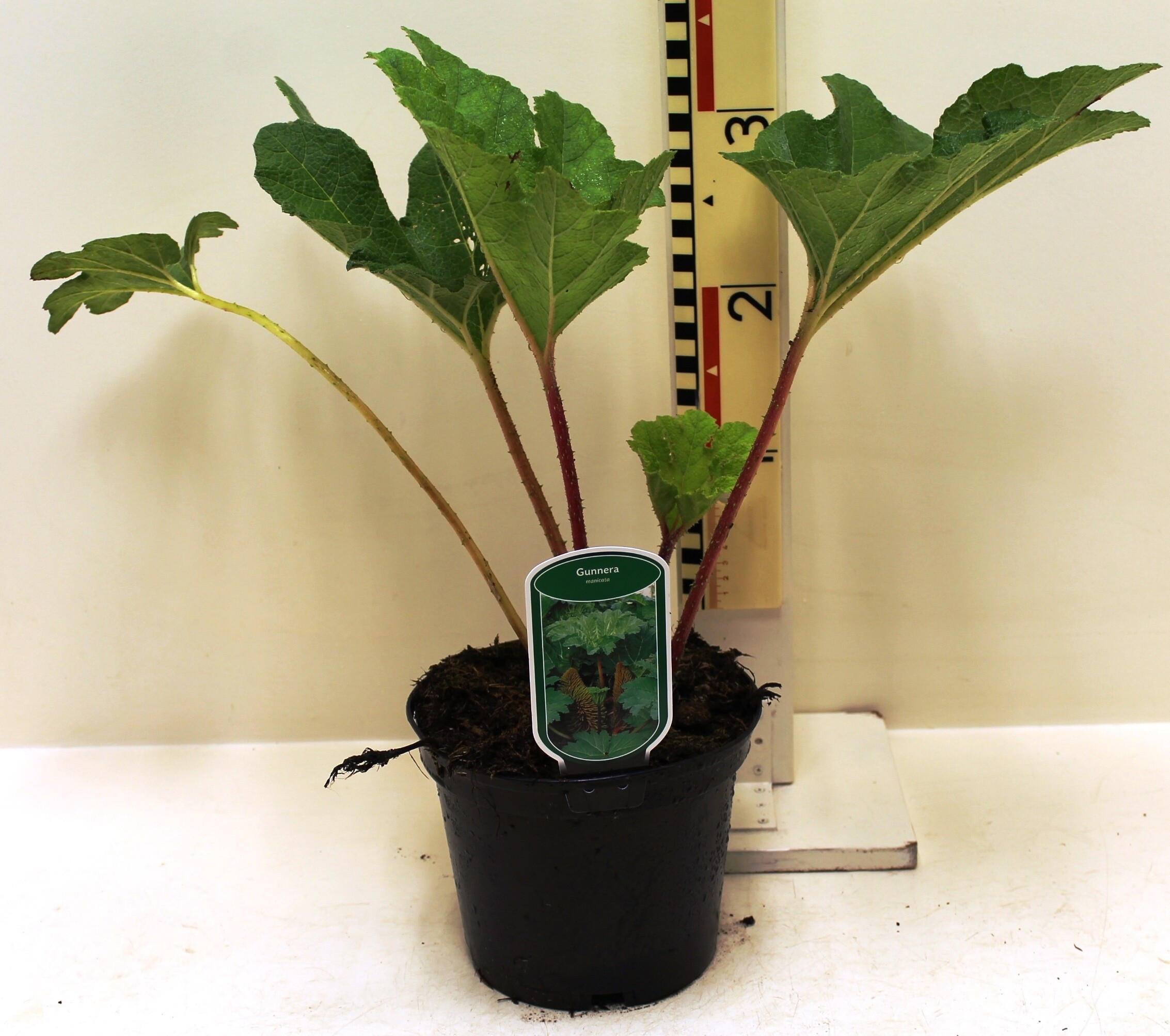
Gunnera manicata Mammoetblad; Gunnera; Reuzenrabarber; Sierrabarber
Noteworthy Characteristics. Gunnera manicata, commonly called giant rhubarb, is one of the largest herbaceous perennials on earth, typically growing in a rounded clump to as much as 10' tall and to 14' wide.It is native to southern Brazil and Columbia. Huge, puckered, toothed, palmately-lobed, prominently-veined leaves (to 6-8' across) with rounded to reniform (kidney-shaped) blades are borne.

Gunnera manicata Wychwood Tasmania
The Gunnera plants in the horticultural trade in Belgium were consistently mislabelled as G. manicata, whereas images of the flowering plants clearly identified them as G. tinctoria . Likewise, Gunnera plants in the horticultural trade in the Netherlands are likely to have been mislabelled either accidentally or on purpose.